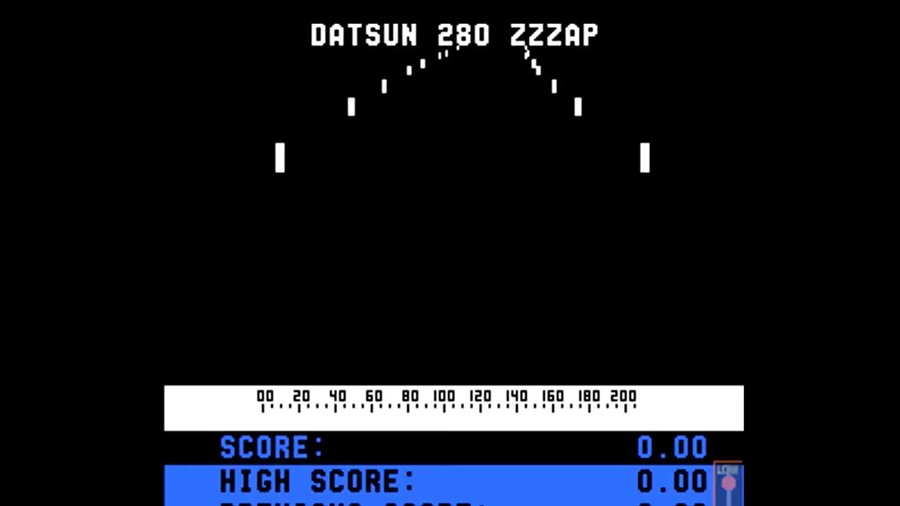The Datsun 280Z Was The First Car With A Licensed Video Game

Imagine stripping down the concept of a driving video game to the bare essentials. A black background with vertical white sticks creates the road, and your car is just a decal on the screen. That's what the 1977 arcade game 280 ZZZAP does, and it was the first video game ever to have a licensed tie-in from an automaker.
Before getting into 280 ZZZAP, it's essential to understand the video game scene in the '70s. This form of entertainment wasn't really available to consumers before this decade. The Magnavox Odyssey home console arrived in 1972, and Pong hit arcades the same year. From there, things quickly became more sophisticated.
In 1976, the first-person driving video game had a sudden boom. At that year's Amusement & Music Operators Association Show, there were two competing, yet very similar, experiences. Atari brought Night Driver, and Midway had Nite Racer. Both were apparently heavily inspired by a German game called Nürburgring 1 from earlier that year.
Play Meter magazine wrote about the Atari and Midway games at the time, saying, "The most interesting thing about the video night racing games is that they introduce a feeling of depth, thus adding a third dimension to video games."
Sometime between showing the game at the convention in November 1976 and its release in 1977, Midway's parent, Bally, was able to strike a licensing deal with Datsun (now Nissan) to use the 280Z in the game. The name changed from Nite Racer to the much more exciting 280 ZZZAP.
We reached out to Nissan in hopes of getting some inside info about how Bally and Datsun made this deal. Unfortunately, the company wasn't able to provide us with any details.
280 ZZZAP is as simple as a driving game can be. The arcade cabinet has a steering wheel, a high-low gearshift, and a single pedal for controlling acceleration. Apparently, this car exists in a world where braking is unnecessary. A decal of a 280Z's nose is at the bottom of the screen, and a painted sky scene sits at the top. The player drives through vertical poles marking the road. The longer you last, the more points you earn. Warnings on the screen indicate the recommended speed for an upcoming corner. Crashing into the sides resulted in messages like BOOM, BANG, and ZAP.
While 280 ZZZAP promoted the car in arcades, the 1977 ZZAP Edition road car advertised the game on the streets. Limited to just 1,000 cars, it got a Sun Burst Yellow body with orange, red, and black stripe decals decorating the side sills and hood. Black accents were also on the roof and tail. The rear received window louvers on the hatch. The powertrain carried over from the standard coupe with a 2.8-liter inline-six making 170 horsepower.
Midway also held a sweepstakes where it was possible to win a 280Z, along with prizes like an RCA color TV. A vintage arcade-focused blog claimed that a person in Rhode Island won the car.
The 280 ZZZAP wasn't solely an arcade game. In 1978, a version came out for the Bally Astrocade home console. Unlike the original, this variant had colors beyond black and white, including a red car with a purple hood and a magenta sky.
If Datsun hadn't done it, there surely would have been another automaker to sponsor a video game. But some company had to pursue this business venture first. Without Datsun taking the first step, we couldn't drive Nissans, Toyotas, or Ferraris in games like Forza Motorsport or Gran Turismo.
If you can find a 280 ZZZAP arcade cabinet drop in a quarter and take a drive. Emulating the game (like in the video below) takes away what makes it special because they can't show the car decal, sky, or faux wood surround for the instruments.
Related News


